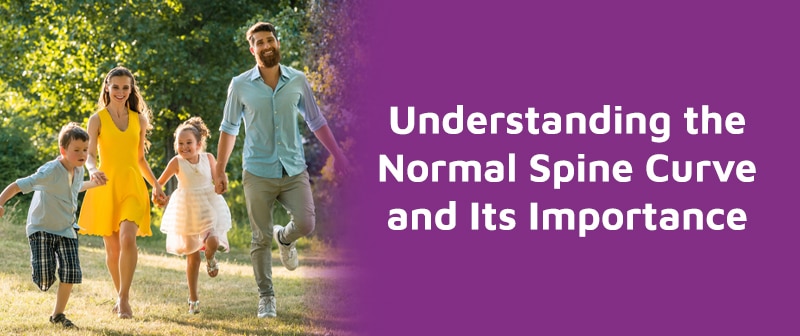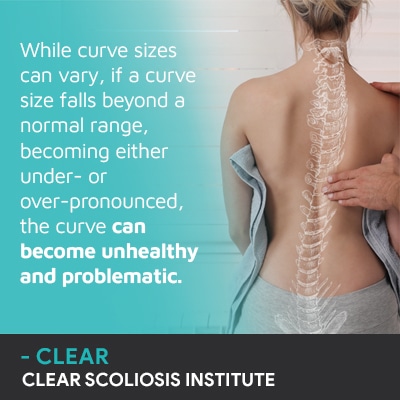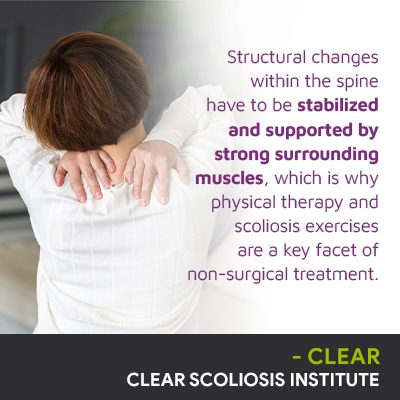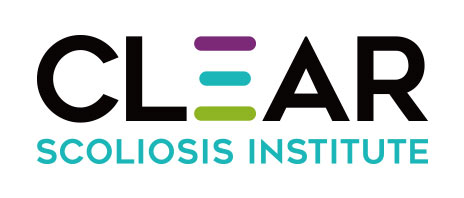
A healthy spine is naturally curved at each of its main sections, and when the healthy spinal curves are in place, its vertebrae are aligned and in a neutral position. Understanding spinal health and function means knowing why the spine is curved in the first place, and what happens when the spine loses one or more of its healthy curves.
The spine's natural curves make it stronger, more flexible, and better able to absorb and distribute mechanical stress evenly. If a single spinal section loses its healthy curve, the entire spine is affected as its biomechanics are disrupted.
Let's start with the three main spinal sections and the type of healthy curve each section needs.
The spine is one long complex structure, hence why the loss of a curve in a single section can affect the entire spine.
There are three main spinal sections that include the cervical spine (neck), thoracic spine (middle/upper back), and the lumbar spine (lower back), and each has a characteristic curvature type that can vary in size from person to person.

Healthy spine curvatures are key to optimal spinal health and function, and when the curves are in place, its vertebrae are aligned; a misaligned spine can cause a number of issues, including uneven wear and tear and spinal degeneration.
Let's talk about the different healthy curve types and what happens when a natural curve is lost and becomes excessive.
The spine's healthy curves make it S-shaped when viewed from the side, and this is because of the spine's lordosis and kyphosis.
A lordotic curve bends inward in a standard 'C' shape, and lordosis is found in the cervical and lumbar spinal sections: the neck and lower back.
Spinal curvature sizes are measured in degrees, and a healthy range of lordosis in the neck would fall within a range of 40 to 60 degrees, and the lower back's lordotic curve should fall between 20 and 40 degrees.
The term lordosis can be used to refer both to healthy and unhealthy levels, and excessive lordotic curves can also be referred to as hyperlordosis.
Kyphosis is the opposite curvature type that bends outwards in a reverse 'C' shape, and excessive kyphosis can be diagnosed as hyperkyphosis.
So what happens when the healthy cervical curve is lost?
Each section of the spine has unique roles to play in maintaining overall spinal health and function, and when it comes to the neck's healthy lordosis, this facilitates the neck's ability to support the weight of the head and maintain a wide range of motion.
The loss of the neck's healthy curve is associated with forward head posture, also commonly known as tech neck.
When an excessive inward curvature develops in the cervical spine, this is diagnosed as cervical lordosis and/or cervical hyperlordosis.
Some common symptoms of an excessive lordotic curve in the cervical spine include neck pain, tight and sore neck and shoulder muscles, and a reduced range of motion in the neck.
Some common causes of cervical hyperlordosis include a muscle imbalance, chronic poor posture, spinal conditions, and trauma, such as whiplash from a car accident.
A healthy lumbar curve is important for facilitating a healthy lower body.
The lumbar spine has to support the weight of the spinal sections above, the torso, and its vertebrae feel the effects of strenuous movement such as bending, lifting, and twisting.
If the lower back loses its healthy range of lordosis and becomes excessive, this is diagnosed as lumbar hyperlordosis and is also referred to as swayback because of how the condition affects a person's posture.
When the lower back has excessive lordosis, it can cause the abdomen and buttocks to protrude excessively, giving the body a swayback appearance; additional symptoms can include back pain, muscle pain, difficulty standing for long periods of time, and disruptions to balance and gait.
In addition, when the spine loses a single healthy curve, it can respond to the uneven forces of the first unhealthy spinal curve with the development of a compensatory curve in another spinal section.
So now that we've explored lordosis, let's talk about what happens when the middle/upper back's healthy curve becomes excessive.
The thoracic spine is the largest spinal section so is vulnerable to the development of a number of spinal issues/conditions.
If the thoracic spine's outward curvature falls beyond a range of 20 to 40 degrees, thoracic hyperkyphosis can be diagnosed at 50+ degrees.
When the middle/upper back develops an excessive kyphotic curve, the upper back and shoulders become excessively rounded forward so is commonly referred to as roundback.
There are different types of kyphosis from postural kyphosis to Scheuermann's kyphosis and congenital kyphosis, and the first step to addressing the loss of any healthy spinal curve is determining the underlying cause and customizing treatment plans accordingly.
When the spine loses a normal curve, it's replaced by an unhealthy and unnatural curve that introduces uneven forces to the rest of the spine and its surroundings.
So what about spinal conditions that cause the development of a different type of abnormal spinal curve?
There are a number of conditions that affect the spine, and many involve a loss of its healthy curves.
Scoliosis is a common spinal condition that causes the spine to develop an abnormal lateral spinal curve (side-to-side), and what can make scoliosis particularly complex is that it also causes the spine to rotate unnaturally.
So scoliosis causes the spine to bend unnaturally to the side and twist, making the condition 3-dimensional.
Scoliosis is the most common spinal condition to affect school-aged children, and as a progressive spinal condition triggered by growth, childhood scoliosis should always be treated proactively.
A progressive condition is going to get worse over time, and when it comes to an abnormal spinal curve, this means the size of the unnatural curve is getting larger and its effects are becoming more overt.
The main effect of scoliosis in children involve postural changes caused by the condition's uneven forces; postural changes can include an uneven eye line, the head appearing uncentered over the torso, uneven shoulders, shoulder blades, a rib cage arch, and uneven hips.
In addition to postural changes, an unhealthy spinal curve can also affect movement; changes to balance, coordination, and gait can also be expected, and changes to movement and balance can also get worse as the spine becomes more unstable and unbalanced.

While surgical treatment is a common option for addressing structural spinal conditions like scoliosis, there are also less invasive non-surgical treatment options that can include chiropractic care, physical therapy, and a number of disciplines that work together.
Here at the CLEAR Scoliosis Institute, an integrative approach involves a number of non-surgical treatment disciplines that are integrated into proactive and customized treatment plans.
A number of chiropractic techniques and manual adjustments can work towards realigning the spine by repositioning the vertebrae that are the most tilted out of alignment from the rest of the spine.
While chiropractic care can help improve the spine's position, curves, and alignment, the spine's surrounding muscles are also important.
Structural changes within the spine have to be stabilized and supported by strong surrounding muscles, which is why physical therapy and scoliosis exercises are a key facet of non-surgical treatment.
Strengthening and balancing the spine's surrounding muscles means supporting structural changes and a spine that has help maintaining its healthy curves and alignment.
So addressing an abnormal spinal curve without surgery means not solely addressing the structural abnormality within the spine, but also addressing all of the condition's effects, including the spine's surrounding nerves, muscles, and postural changes.
Maintaining a normal spine curve in each of the spine's main sections is key to the entire spine's health and function, and this includes a healthy range of the spine's lordosis and kyphosis.
The spine's healthy curves are necessary to make the spine flexible, strong, and able to handle stress from movement and impact.
As a CLEAR-certified scoliosis chiropractor, the goal of scoliosis treatment is to restore the spine's healthy curves and alignment so it can function optimally, and while I can never guarantee treatment results, with early detection and intervention, many cases of scoliosis respond well to non-surgical intervention.
If a normal spinal curve is lost, it needs to be restored so the spine's biomechanics aren't disrupted, and for patients of the CLEAR Scoliosis Institute, this is worked towards through a conservative non-surgical treatment approach that's chiropractic-centered, proactive, and can be highly effective.

CLEAR provides a unique and innovative way of understanding scoliosis. Sign up to receive facts and information you won’t find anywhere else.
